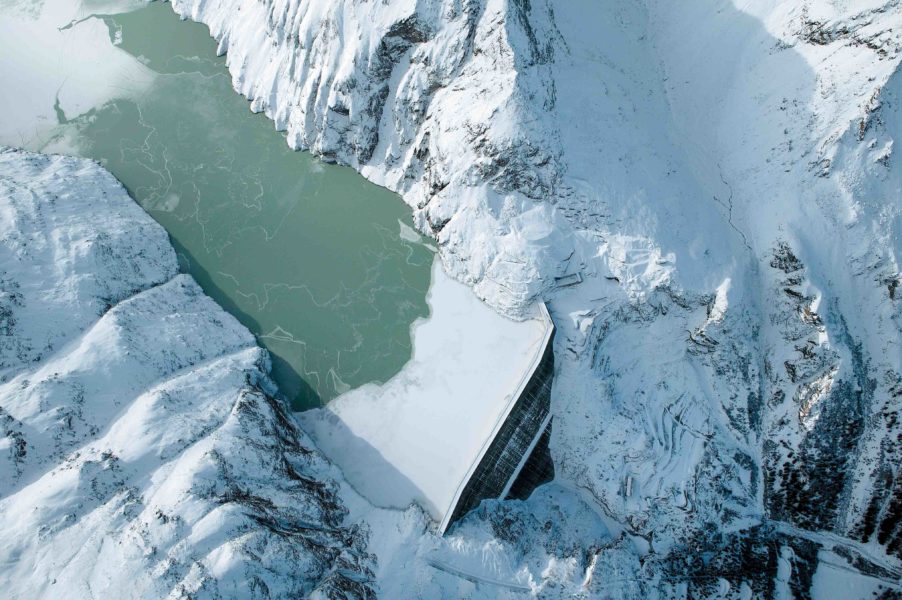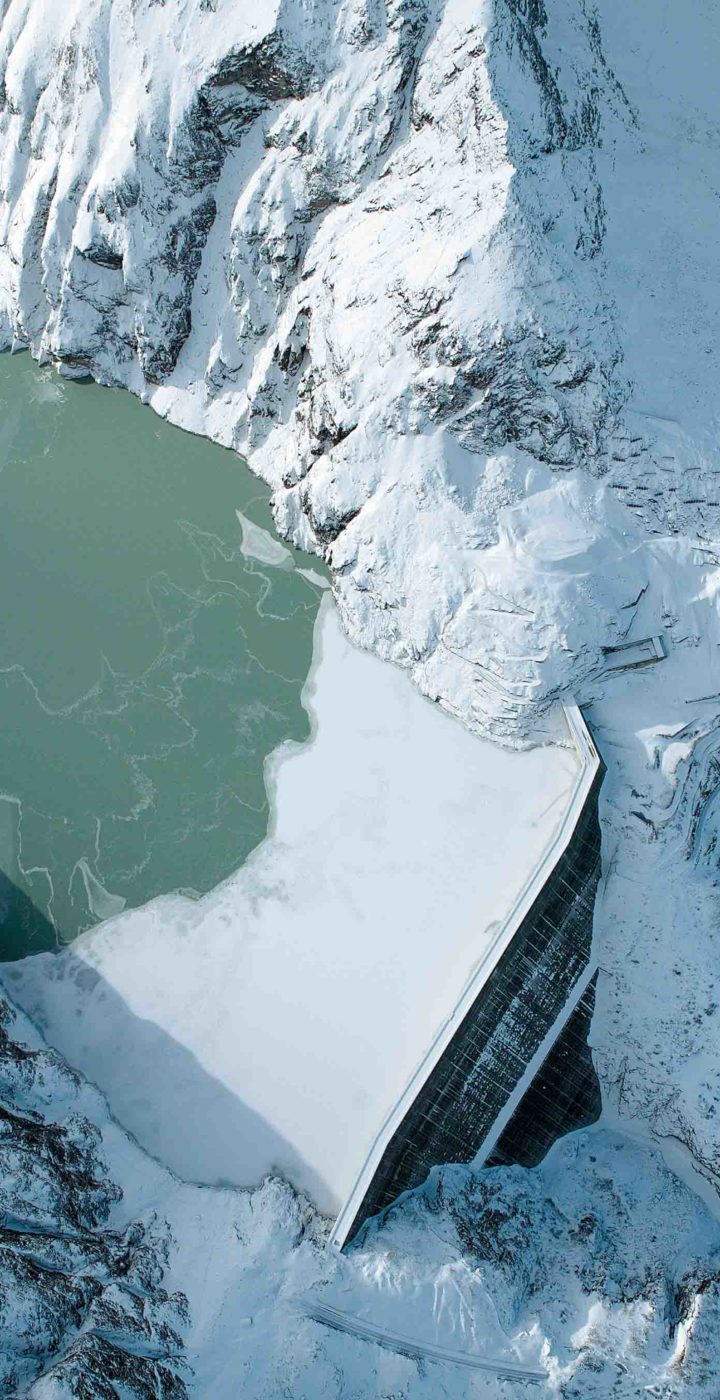Why is the project at this specific location?
The location provides the following advantages:
- Large and long-term water potential due to high glaciation
- Connection to an existing power plant system
- A landscape that will change greatly regardless of the project (including a new natural lake)
- Ideal gorge, which makes it possible to store a lot of water with little concrete
- Location with low visibility
When will the glacier have completely retreated from the perimeter of the future reservoir?
Current forecasts predict that the glacier will have completely retreated from the reservoir between 2045 and 2060, depending on climate scenarios and modelling assumptions. From this point onwards, the planned useful volume will be fully available.
What is the effect of the temporary damming of the glacier?
The glacier is dammed at short notice by both the natural lake and the reservoir. This temporary damming has no significant impact on the glacier, the lake or the surrounding environment. The reservoir will accelerate the melting of the glacier by around five years.
Will the Gornerli project use more water in the future than before?
Yes, there are plans to use part of the current overflow in compliance with the applicable legislation and store it as important winter energy in the Gornerli reservoir.
Are there glacier forefields worth protecting as part of the Gornerli project?
In very general terms, a glacier forefield comprises the areas of the glacier terminus that were covered by ice until around 200 years ago. Such a glacier forefield area also exists below the Gorner glacier, but the area is not under protection. The fact that the Gorner glacier is melting means that the glacier forefield will continuously expand. The glacier forefield that will be exposed in the coming decades will consist of rocks, stones, moraines and new vegetation but will also be fundamentally characterised by a large lake. The adoption of the Electricity Act means that any protected status of this glacier forefield as a floodplain or biotope of national importance will not lead to a ban on the Gornerli project.
What is the impact of the additional water withdrawal on the environment inside and outside the Grande Dixence perimeter?
The possible effects of removing part of the summer overflows due to the severe glacial melting are currently being investigated as part of the environmental impact assessment. In principle, all stretches of water within the Grande Dixence area of influence in Upper and Lower Valais are investigated. As of today, the effects in the Matter Valley in particular need to be addressed.
Why are new reservoirs in the Alps so important?
Climate change and rising temperatures mean that glaciers in Switzerland will largely melt in the coming decades. As water reservoirs, glaciers play a decisive role in flood protection and the long-term security of the regional water supply. Climate change will lead to an increase in flooding situations (melting glaciers and heavy rainfall) and prolonged periods of drought. Reservoirs will at least partially take over the function of glaciers as water buffers.
How does climate change influence the Gornerli project?
Climate change will cause the Gorner and Grenz glaciers to retreat significantly in the coming years. The new glacier forefield will be shaped by rocks, stones, moraines and new vegetation, as well as a natural lake. This means that the landscape will be greatly altered by climate change, regardless of the Gornerli project. The Gornerli project would not be possible and would not make sense at all without this change. The Gornerli is practically “a child of climate change”, but it can also contribute to counteracting the effects of climate change by providing additional winter electricity, additional power production, reduced pumping costs, protection against flooding and long-term security of the regional water supply.
Are there enough inflows to fill the Gornerli reservoir in the longer term?
An overall assessment of the future tributaries and possible projects for the entire catchment area of the Grande Dixence between the Matter Valley and Val de Bagnes will be carried out when dimensioning the Gornerli project. Inflows will continue to increase in the coming decades and so will overflows. In the second half of the century, inflow volumes will tend to return to the levels of the last century. Nevertheless, the Gornerli lake will also be used to its full extent in the Valais Alps overall hydraulic system in the long term. The topology of the future lake’s bedrock is also decisive for dimensioning the Gornerli project.
When will the entire useful volume be available, depending on the glacier retreat?
Depending on climate scenarios, the Gorner Glacier will disappear completely from the lake between 2045 and 2060. The entire storage volume of the Gornerli lake will then be usable.
How will the construction of the dam affect the future environment and landscape?
Protecting the environment and the landscape is a key challenge of this project. The relevant clarifications are currently underway as part of the environmental impact assessment (EIA), in close coordination with the stakeholders. Climate change is changing the landscape a lot in a natural way. The construction of the dam will help shape this new landscape, but the project also makes a very important contribution to combating the effects of climate change. The dam wall will be the only visible structure; all other parts of the facility, such as the pumping station, energy supply line and transport routes, will be routed underground. The unavoidable negative effects are compensated by substitute and compensation measures.
What is the extent of the new artificial lake compared to the natural lake that is forming anyway, especially in terms of area and altitude?
The retreat of the glacier will form a natural lake with an area of about 2 km2. The area of the planned Gornerli lake is approx. 3.4 km2. This means that the area of the lake will increase by around 70% as a result of the Gornerli project. The maximum altitude of the artificial lake is around 40 metres above that of the natural lake.
How will the new structure cope with the steadily increasing sediment input due to the retreat of the glacier?
The Gornerli bedding concept is part of the ongoing investigations. Measurement campaigns have shown that a natural lake of around 50 million m3 will form when the glacier retreats. This natural retention volume and the structural measures on the planned dam will help make the expected sediment input manageable in the long term.


